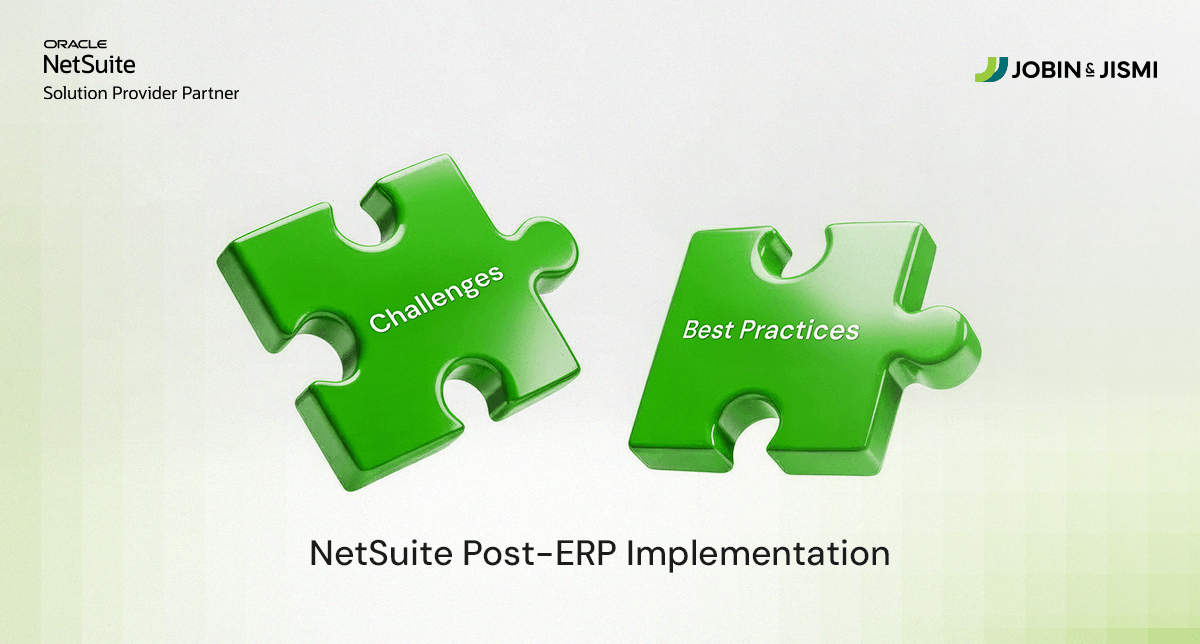Top SuiteCommerce Features that Boost Online Sales

B2B ecommerce is no longer an offshoot. It has now fast become the major channel for revenue upside in the digital-first economy. In 2024, B2B ecommerce sales in the United States were $2.297 trillion. That number reflects a growth rate eight times that of total B2B sales, according to industry analysts.
With this transition, digitizing the sales process is only the very tip of the iceberg for CFOs and C-suite leaders. It is about building scalable, efficient, and customer-centric revenue engines on these platforms. Decision makers want ecommerce platforms that drive businesses in measurable ways, not just surface-level digital presence.
SuiteCommerce Advanced, NetSuite’s enterprise ecommerce platform, offers a host of features engineered especially for medium and large B2B businesses. These features affect key financial metrics like return visitor rates, average order value, and operational costs. Some organizations report up to 70 percent improvement in return visitor rates, showcasing that SuiteCommerce is capable of giving great returns for an organization when implemented strategically.
Strategic Foundation: Why SuiteCommerce Matters for B2B Leaders
Unified Commerce Ecosystem
SuiteCommerce integrates with NetSuite's ERP to ensure that inventory, orders, customer profiles, and financials are never caught in the silos that arise when companies use disconnected platforms for ecommerce, accounting, and inventory management.
The benefits are twofold: First, it lowers the total cost of ownership by removing the need for multiple solutions. Second, it facilitates comprehensive analytics across the entire customer life-cycle-from lead acquisition to long retention.
Scalability for Enterprise Growth
The SuiteCommerce is designed to scale with your business. It comes in multiple languages and currencies, effective for companies that are branching out to foreign markets. The cloud infrastructure guarantees stability and availability even at heavy traffic times, like during product launch or at busy times.
The advantage is twofold. First, it eliminates the multiple point solutions, which decrease the overall cost of ownership. Second, it provides comprehensive analytics that cover all aspects of the customer lifecycle, from lead acquisition to long-term retention.
Revenue-Driving Features: The Executive Perspective
Advanced B2B Commerce Capabilities
Business Impact: These features take away the complexity of B2B transactions, shorten sales cycle time, and reduce administrative overhead expenses.
Key Features:
1. Pricing extensions based on account or volume.
2. Approval workflows for purchases and quotes.
3. Account-specific product catalogs.
4. Bulk ordering functionality and quote-to-order flows.
ROI Metrics:
1. Up to 60 percent reduction in order processing time.
2. Higher average order values because of personalized pricing strategies.
3. Fewer manual tasks for the sales team, leading to improved productivity.
Intelligent Search and Product Discovery
Business Impact: Enhanced searching improves conversion rates and acquisition costs, as customers can get what they want quickly.
Key Features:
1. Integration with NetSuite Marketing Analytics for buyer insight.
2. AI-Powered Product Recommendations.
3. Advanced Filters and Navigation.
4. Schema Markup to Enhance Search Engine Visibility.
ROI Metrics:
1. Ranking better in organic search means less dependence on paid advertising.
2. Higher conversion rates caused by product visibility.
3. Less support costs from customer self-service.
Omnichannel Integration and BOPIS(Buy Online, Pick Up in Store)
Business Impact: Aligning digital and physical experiences is essential for meeting modern buyer expectations, especially for companies with distributed sales and service networks.
Key Features:
1. BOPIS(Buy online, pick up in store).
2. Cross-channel and real-time inventory visibility.
3. Unified customer profiles for holistic experiences.
4. Order management automation across digital and physical locations.
ROI Metrics:
1. Lower shipping costs through local pickups.
2. Higher customer satisfaction and loyalty scores.
3. Higher inventory turnover via accurate demand forecasting.
Advanced Promotions and Pricing Engine
Business Impact: Strategic pricing allows businesses to remain competitive while maximizing margins.
Key Features:
1. Stackable discounts, volume discounts, and promotions.
2. Automated contract-based pricing.
3. Real-time tracking of promotions and performance.
4. Inventory or seasonal dynamic pricing.
ROI Metrics:
1. Higher profit margins because of optimized pricing.
2. Improved customer lifetime value with targeted promotions.
3. Fewer pricing errors and manual adjustments.
Customer Self-Service Portal
Business Impact: A fully self-service reduces the burden on support teams while simultaneously increasing customer experience.
Key Features:
1. Access to historical order information, invoices, and payments.
2. Ability to generate and manage support tickets.
3. Download contracts and compliance documents.
4. Quick reordering based on prior purchase.
ROI Metrics:
1. Up to 40% reduction in support costs.
2. Faster solution to problems and customer satisfaction.
3. Higher retention because of greater buyer autonomy.
Analytics and Business Intelligence
Business Impact: Access to real-time data and customizable dashboards for executives, empowering them to make informed, strategic decisions.
Key Features:
1. Dynamic dashboards and custom reporting.
2. Buyer journey tracking from initial discovery to checkout.
3. Insights on conversion rates, order value, and acquisition costs.
4. Inventory, marketing, and revenue forecasting.
ROI Metrics:
1. Lower carrying costs due to more solid planning.
2. A more efficient use of marketing budgets.
3. Improved forecasting accuracy for strategic planning cycles.
Implementation Considerations for Leadership
Total Cost of Ownership Approach
SuiteCommerce's cost profile depends on the scope of customization and integration required. So while the subscription fees for SuiteCommerce and its implementation fees may apply, on the other hand, organizations do save on their total software expenditure by consolidating ecommerce, ERP, CRM, and marketing into one ecosystem.
Going this route removes expensive third-party connectors, licenses, and duplicate systems, leading to a much leaner and efficient IT infrastructure.
Change Management Strategy
Change management is vital to the success of a SuiteCommerce implementation. In essence, since the platform will be used by different departments, it must offer sufficient training and communication.
A typical implementation timeline ranges between three and six months based on the complexity of the organization and resource allocation. Successful firms dedicate internal teams and have onboarding programs to encourage broad adoption.
Risk Mitigation
The NetSuite cloud infrastructure provides reliability, security, and compliance standards on the enterprise level. These built-in features comply with regulations like PCI DSS and GDPR, limiting risk exposure.
Additionally, the cloud-based delivery model enables your ecommerce platform to scale in real time without requiring any infrastructure investment or system overhaul.
Strategic Recommendations and Next Steps
Decision Framework
Before moving forward with SuiteCommerce, leadership should develop a firm understanding of the desired business objectives, including:
1. Comparing the anticipated increase in revenues against the total costs of implementation.
2. Investigating inefficiencies or pain points that SuiteCommerce could fix.
3. Aligning the rollout with seasonal fluctuations or fiscal planning schedules.
4. Building a business case with these elements allows for confident, data-driven investment decisions.
Implementation Best-Practices
To get the best results from SuiteCommerce, consider these best practices:
1. Use an implementation partner with proven experience and domain expertise.
2. Designing a phased deployment plan that minimizes business disruption.
3. Define key performance indicators before implementation to measure success post-launch.
A focus on both the technical and operational sides of the rollout is critical to ensuring a smooth transition and sustained adoption.
SuiteCommerce is more than just an online store; it is a fully integrated revenue platform that links together the front and back office, enhances customer experience, and drives measurable performance gains.
For CFOs, CTOs, and other executive leaders, the question is no longer whether to invest in B2B ecommerce; the focus is on how to do it strategically, equipped with the essential tools to support growth, efficiency, and customer satisfaction.
Now is the ideal time to evaluate SuiteCommerce as a digital commerce platform for your organization to modernize digital commerce operations while eliminating operational friction and exploring new revenue avenues.
Next Step: Start an internal discovery session to align internal stakeholders and evaluate the business case for your industry. With a good strategy, SuiteCommerce could prove to be a tremendous asset on the road to long-term success.
on LinkedIn




